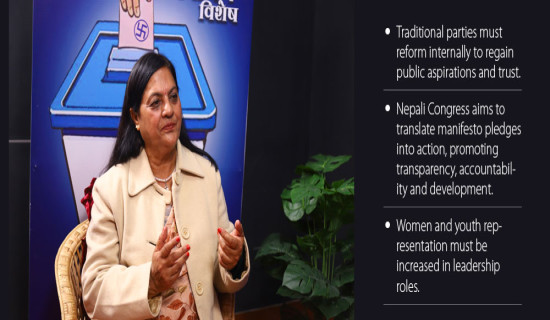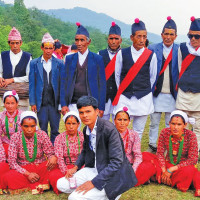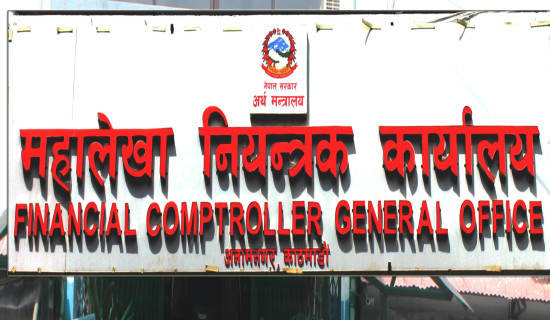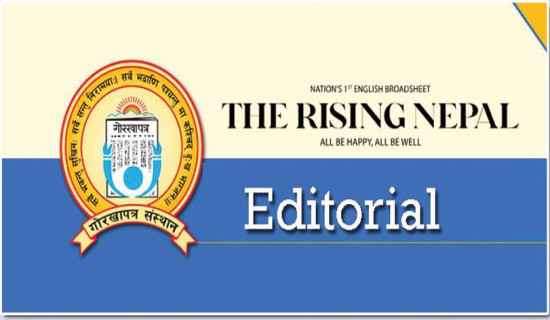- Tuesday, 16 December 2025
Film festivals provide platform for young filmmakers
Dr. Rwita Dutta, an Indian professor, film critic, and editor, as well as a member of the International Film Critics' Association (FIPRESCI), recently visited Nepal as a jury member of the Nepal International Film Festival (NIFF).
She has been a jury member at many international film festivals, including Cannes, Busan, Kiev, Cairo, Kerala, Osian's Cinefan, Nepal, Aswan, Ukraine, Aurangabad, and Bangalore.
She has also delivered lectures in various countries, including Turkey, Kazakhstan, Poland, Eastern Europe, China, Brazil, Germany, Romania, and others, both domestically and internationally.
The Rising Nepal’s Renuka Dhakal caught up with her to discuss her experiences at film festivals and her perception of the Nepali and internation film festivals. Excerpts:\
How do you perceive other international film festivals in comparison to NIFF? What are the similarities and differences between NIFF and other film festivals?
Film festivals have various criteria. The biggest international festivals, such as Cannes, Venice, and Berlin, have been established for decades. Building a festival into a well-recognised brand takes time, just like building a company into a brand. These prestigious festivals have been running for over 50 years. In comparison, Nepal International Film Festival is still in its early stages, being only in its eighth year.
However, the growth of NIFF within these eight years has been remarkable. I have seen an increasing number of inquiries from debut and young filmmakers about NIFF. The festival has garnered significant attention worldwide, receiving a large number of submissions every year. Achieving this in just eight years is a significant accomplishment.
As a film critic, you must have watched several Nepali films. What is your opinion about Nepali films? What are their strengths, and what areas need improvement?
Nepali films are evolving well. For instance, Shambhala has reached the Berlin and Locarno film festivals, which is a great achievement internationally. On the commercial side, Pujar Sarki is an impressive film with brilliant cinematography. Other films, such as Crawling Crows – Aankha also stood out. So, yes, Nepali cinema is on the rise.
What Nepali films have you watched?
I have watched Pujar Sarki, Shambhala, Crawling Crows – Aankha. These were part of the competition section at festivals.
You primarily watch films that are screened in international film festivals. Have you watched any commercial Nepali films?
No, unfortunately, not yet. But I do want to watch them and will catch up soon. The issue is that Nepali films are not released in India, so I do not have access to them. I might ask Nepali filmmakers to send me some links, as I would love to explore more Nepali films.
What suggestions would you give for improving Nepali cinema? What advice would you give to Nepali filmmakers to attract more audiences?
The major area that needs improvement is the content. The filmmakers should focus on contemporary, novel ways of storytelling. Young audiences today have access to global content through OTT platforms, watching films from Scandinavian countries, Korea, and Hollywood. Naturally, they compare Nepali films with these international productions, which are technically superior.
Nepali filmmakers who want to create serious cinema should enhance their technical skills. They could consider attending film schools or watching a broader range of films to understand global trends and where they currently stand. Learning from international cinema would help them improve their craft.
What is the current state of Bollywood films? Recently, there have been reports that South Indian films are overshadowing Bollywood. Why is this happening?
Yes, that is true. However, I do not categorize them simply as ‘South Indian films’ because South India comprises four different film industries, including Telugu, Kannada, Malayalam, and Tamil. Each has its unique aesthetics, storytelling, and production style.
These industries are overshadowing Bollywood because Bollywood has become repetitive. The industry continues to produce the same kinds of narratives, such as boy-meets-girl stories, without much innovation. Today’s audiences, exposed to diverse global content through OTT platforms, seek fresh, realistic, and sleek storytelling.
Among South Indian industries, Malayalam cinema is the most acclaimed, followed by Tamil and others. They produce bold, contemporary stories that match international standards. As a result, Bollywood now frequently casts South Indian actors, recognising their growing influence.
You have attended and participated in many film festivals. Why do you think such festivals are important for cultural exchange?
There are three main reasons why film festivals are important:
Platform for Young Filmmakers - Independent filmmakers and debut directors often struggle to reach audiences. Festivals provide them with a platform to showcase their work globally. For example, Shambhala gained recognition only after participating in multiple festivals.
Learning and Networking for Film Critics and Journalists - Festivals allow journalists and critics to learn about new cinema trends, meet and interview filmmakers, and engage with veteran directors. This exposure enhances their knowledge and writing.
Cultural and Professional Exchange - Festivals serve as a meeting point for creative professionals. Participants discuss films, exchange ideas, and explore production collaborations. Many festivals also have film markets where filmmakers can connect with distribution companies and sales agents, ensuring their films reach wider audiences. In short, festivals play a vital role in cultural and cinematic exchange.
How do you select films for the competition? What aspects do you focus on?
We consider several factors such as narrative quality, content relevance, aesthetic sense, creativity, and technical execution. Acting, performance, and cinematography are crucial aspects as well. Our selection is not limited to local perspectives, we assess films based on international standards.
People often ask why certain films do not get selected. The reality is that the selection process is competitive, and sometimes, a filmmaker who does not get selected this year may succeed in a future edition. Filmmaking is a continuous learning process.
Do you know any film critics in Nepal?
No, unfortunately, I do not. I always try to read available reviews, but I have not had the opportunity to meet or interact with many Nepali film critics.
How do you approach film criticism? Some critics focus on negative aspects. What is your philosophy?
I do not believe in harsh criticism. A film is the result of a filmmaker’s hard work, and there is always something good in every film. Rather than criticising filmmakers, critics should highlight both strengths and areas of improvement.
Many critics tend to focus only on negatives, but constructive criticism is more valuable. If filmmakers receive well balanced feedback, they can improve without being discouraged.
How did the star-rating system in film criticism originate?
The star-rating system started in Hollywood. Roger Ebert, a well-known American film critic, introduced the concept. His reviews were widely followed, and his ratings influenced audiences’ film choices. India later adopted this system, and it eventually reached Nepal. This trend continues today, with critics providing star ratings to help audiences decide which films to watch.















